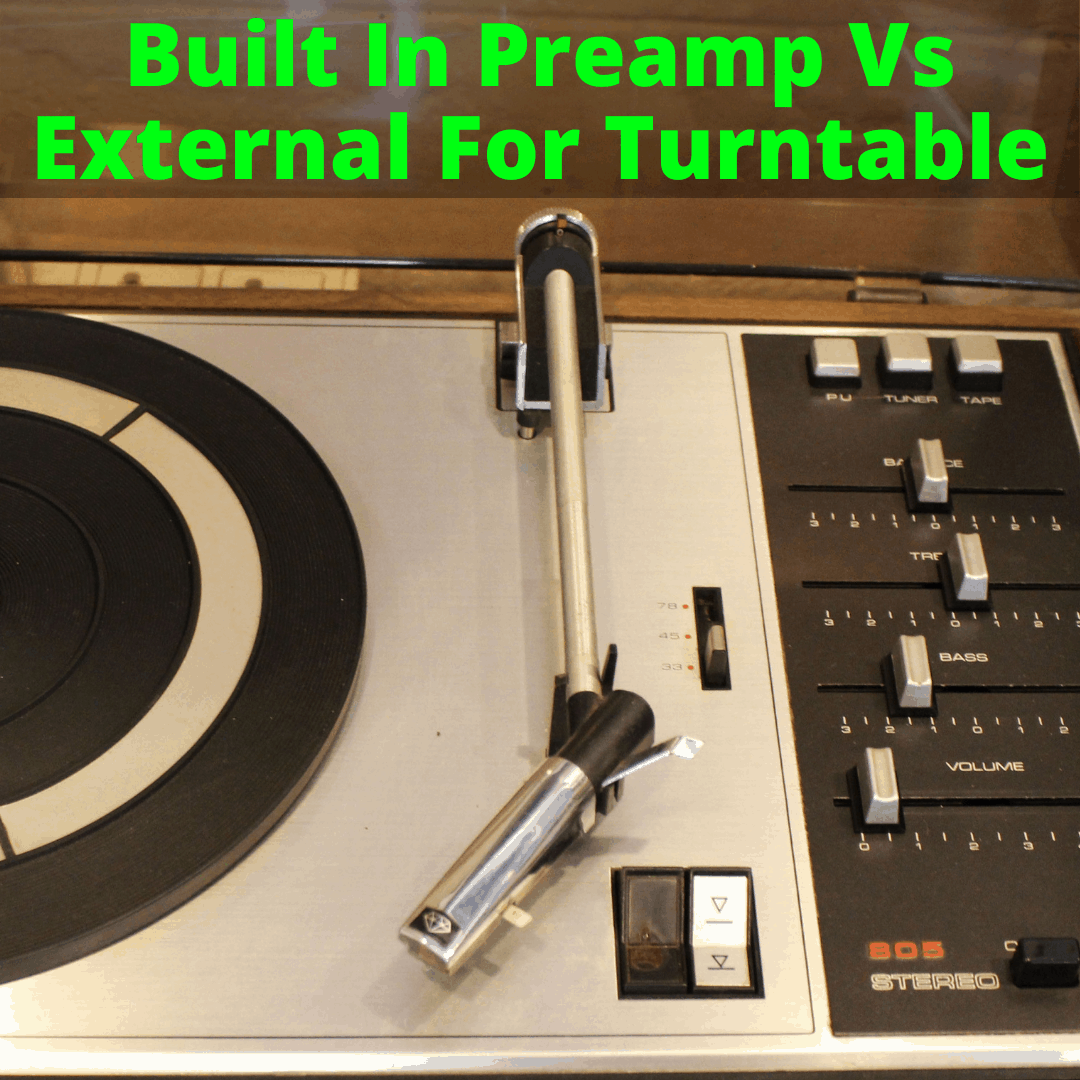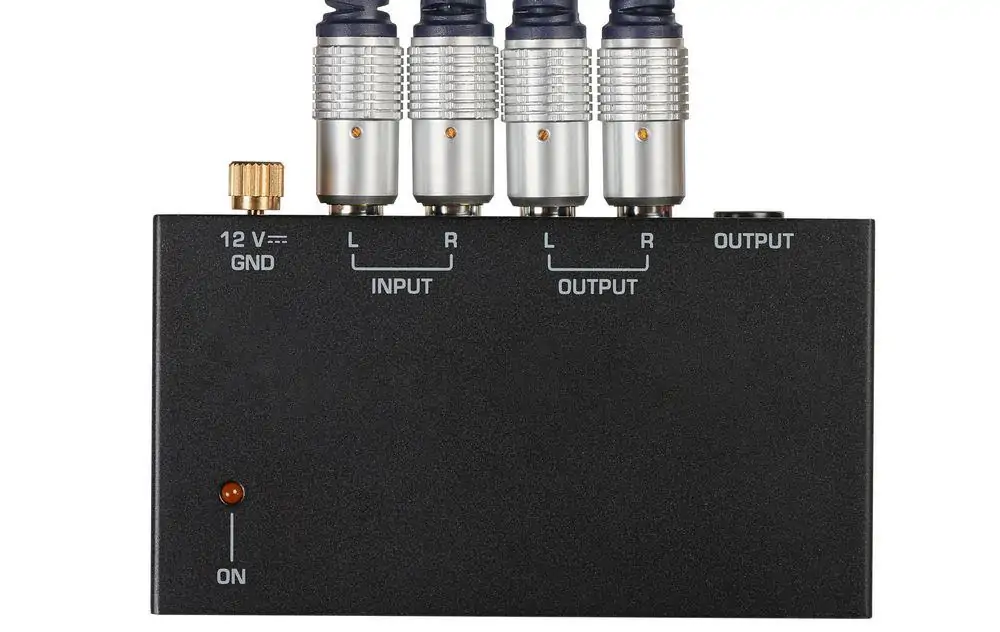
Do you save money, or spend more for quality?
Or the other age-old question.
Do you go for ease and convenience, or go with the more complicated option for better quality?
Either way, you have to decide how important sound quality is to you. Because that is the primary difference between an internal and an external preamp.
But it’s not the only difference and things aren’t quite as simple as I just made them sound. Let’s take a closer look.
Contents
- 1 Built In Preamp Vs External
- 1.1 What Is A Built In Preamp?
- 1.2 What Is An External Preamp?
- 1.3 Differences Between Built-In And External Preamps
- 1.4 Similarities Between Internal And External Preamps
- 1.5 Advantages Of Built-In Preamps
- 1.6 Advantages Of External Preamps
- 1.7 Who Should Get A Built-In Preamp (And Why?)
- 1.8 Who Should Get An External Preamp (And Why?)
- 2 Standalone Vs Built-In Preamp: Final Thoughts
Built In Preamp Vs External
We’ll begin by looking at each option individually. Then we will compare the differences and similarities, and finally see which option is best for which type of person.
What Is A Built In Preamp?
A built-in preamp is when a turntable has a preamplifier inside the unit itself. The job of a preamp is to convert the sound signal from the phono cartridge from millivolts to about one volt, which is called line level.
Line level is the level that all consumer audio electronics operate within. But record players are much quieter, so their output needs to be amplified by a phono preamp.
All phono cartridges put out millivolts which need to be amplified to line level to be used by audio equipment. Built in preamps are included with some turntables as an incentive for consumers to buy them, because it means they won’t have to buy a separate preamp.
What about a phono stage What is a phono stage and doesn’t it do the same thing? Yes, it does. That’s because “phono stage” is just another name for an internal preamp. They are the same thing.
What Is An External Preamp?

External preamps are not inside the turntable, but standalone units which need their own power supply and must be connected to the turntable with RCA cables.
External preamps are the same as built-in preamps as far as the job they do. Both will take the incredibly quiet output of a phono cartridge and amplify it to line level so the audio receiver and amplifier can use the signal.
Differences Between Built-In And External Preamps
First, there’s the obvious difference. One is contained inside the turntable and the other is stand-alone unit that needs to be connected to the turntable with cables.
But there a are some other differences between internal and external preamps as well.
Different Internal Construction
Built in preamps tend to have much more stripped-down construction in order to physically fit inside the turntable’s chassis. This means the circuits and circuit boards are smaller and use more compact components.
Different Components
Because built in preamps are kind of stuck inside a turntable as an afterthought, they usually use cheaper capacitors, resistors, op amps, and circuit boards. Typically, not much attention is given to the quality of the parts of these internal preamps.
Key Takeaway
The main difference is that internal preamps are not generally as high quality as external phono preamps, and they don’t sound as good as a result. Of course, there are exceptions, but they’re rare.
That’s why audiophiles prefer standalone phono preamplifiers and generally look down on internal preamps.
Similarities Between Internal And External Preamps
Both internal and external preamps take the incoming audio signal from the phono cartridge and amplify it to line level. Both add some amount of inherent noise in the process of amplification.
Any time an audio signal is amplified there is noise added. How little or how much noise is added depends on the quality of the preamplifier. The goal is always less noise, and a more pristine signal.
Advantages Of Built-In Preamps
The only redeeming quality of built-in preamps is convenience. If you buy a record player with a built-in preamplifier, you can start playing records right away (assuming you have a player with speakers). You don’t need to buy any additional equipment.
You also won’t need as much space to keep your player. this means you won’t need the best record player stand on the market. You can get by with a simple table, or just place your turntable on any piece of furniture you already have.
This is great, if you just want to be able to play records with as little fuss as possible. But if you care about sound quality, you probably won’t want to go this route.
You will not find many serious record collectors singing the praises of internal preamps. They are almost universally regarded as inferior to external preamps.
If you are obsessed with high quality sound, you are most likely not going to be purchasing a turntable with a built-in preamp, or you are going to bypass it in favor of an external one.
Advantages Of External Preamps
External preamps are widely accepted as the optimum choice for serious music listeners. Most of the best turntables do not come with built-in preamps because they are almost never any good!
There are a few main reasons that external preamps are preferred over internal preamps.
Better Internal Components
Stand alone phono preamplifiers have much better internal components. Because these units are made to do only one job, they use better capacitors, resistors, and other parts. The better the parts, the less noise is added. This means better sound quality.
Better Sound
External preamps just plain sound better. You will not find any experienced vinyl listeners that claim internal preamps sound better.
Good sound is the reason people buy external preamps to begin with. Because sound is so important, there are people that will spend over a thousand bucks just on the preamp! Luckily, you can get a great phono preamp for under $500.
When something does only one job, it will do it better than something that does multiple jobs. Think of an all-in-one stereo system for example.
They have tape decks, CD players, tuners and amplifiers built in. These units almost always break very quickly and never sound as good as systems made up of different individual components that each perform one function only.
Who Should Get A Built-In Preamp (And Why?)
If you are brand new to the world of vinyl and turntables, you may want to consider getting a turntable with a built-in preamp. These kinds of units save you some money and some hassle during setup.
Getting a built-in preamp is a matter of budget and convenience. If you just want to get something cheap that will play your records and you do not want to spend any time setting it up, then a built-in preamp is the choice for you.
It is also a good option if you want a portable record player that you can easily take with you to listen to records anywhere.
Who Should Get An External Preamp (And Why?)
If your main concern is sound quality, you should get an external preamp. Even if you have a receiver with a phono preamp. It will cost you extra, but the sound will be much better. Your records will sound the way they are intended to sound.
It can be a hard decision to spend an extra couple hundred bucks on a preamp when you are on a budget. You could buy a deck that has one already built in and pay so much less in total.
However, it is an expense that is well worth it. Even if you don’t care too much about the sound now, you probably will down the road.
There is an audible difference between a cheap turntable with a built-in preamp and a good deck using a high-quality external preamp. If you get to the point where you have invested hundreds, even thousands, of dollars in your record collection, you should spend the extra cash to get a good preamp.
You may be surprised at the level of quality you can get in a preamp without spending too much money. There are so many options out there and it is up to you to choose the best one for your needs.
Just keep in mind that no matter which external preamp you get, you are making the right decision and your records are going to thank you!
Standalone Vs Built-In Preamp: Final Thoughts
An internal preamp is more convenient and generally much cheaper. But it rarely gives you good sound quality. External preamps sound much better, but they cost more and require some setup.
Which one is right for you depends entirely on your preferences. Hopefully, this article has made clear which way you should go.
Thinks for the information it cleared up many question I had. this will help me make a decision on what type of record player I want to buy.
Is the internal phono preamp in my receiver better than a standalone external phono preamp?
Read the article! Stand alone preamps offer better sound quality
I have a Cambridge audio pre- amp and B&O 1200 deck (which has now a broken cartridge.). I need to replace the deck as I can’t get a new cartridge – any suggestions as to a suitable deck to pair with my CA pre-amp …?
Thanks
If I have a turntable with a built in pre-amp (which I do, an AT-120XBT-USB), can I still use an external pre-amp with it, or would they conflict? Do I need to do anything special in connecting them?
Thanks!
Switch the internal preamp off
Thanks Dave!
I have a denon avr2807 with phono input I’ve used all this time I just put a ortofon bronze cart on my denondp300f will a external phono stage help with sound and how much to spend on RCA leads
I have a vintage 1970’s 120 W/channel integrated Marantz amp. Is the phono pre amp in it still inferior to an external, considering this was the original great vinyl error? Or has technology rendered it obsolete?
You’re missing one of other reason to get an external preamo: of your amp has a built in one, but the distance from the turntable to the amp is significant. The signal degrades with distance along the wire at the low levels. You then need a separate preamp next to the turntable so it is the line level that travels the distance.
Not if you one built in to the turntable, but it’s an angle worth mentioning.
I have SSL2 Interface with built in preamp. I am going to purchase WA12 MKII. will there be any benifit?
Thank You! All he info I was looking for.
What kind of speakers should be used with a record player ,I just purchased a audio technica 120 record player & majority 100 w speakers can I still use an external pre amp / amplifier + what type should I pair with my speakers & turntable ?